Seeing a scaly, slithering snake in your home or yard can immediately prompt panic. Snakes are common throughout San Diego County, especially during warmer months, but they can also be managed. Below, we discuss some of the most common snakes you might encounter and how you can deal with them if you do.
Key Takeaways
- Most snakes in San Diego are harmless to humans. However, they may still bite when threatened.
- Many species prefer to live in grassy, rocky, or wooded areas with hiding spots and prey access.
- Always contact a professional to remove snakes safely; never attempt to handle a snake yourself.
 1st pest control service just $49
1st pest control service just $49
Must schedule service online.
Act now. Limited time offer.
Rattlesnakes (venomous)
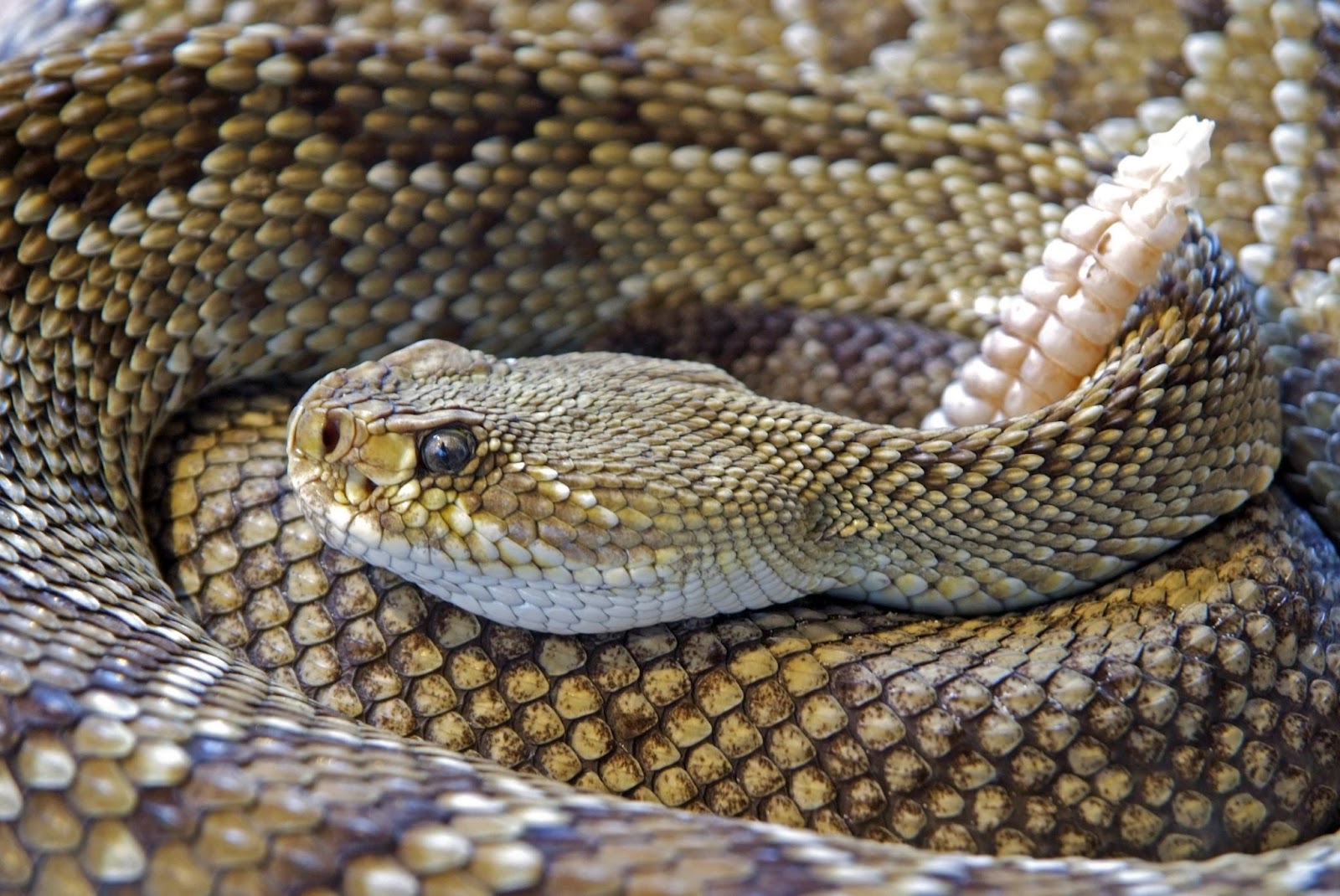
An adult rattlesnake with a visible rattle. Source: Pexels
California is home to 7 species of rattlesnake, including examples like the:
- Southern Pacific rattlesnake
- Red diamond rattlesnake
- Southwestern speckled rattlesnake
These infamous crawlers are most active during “rattlesnake season,” which falls between March and October.
Characteristics
Rattlesnakes have a distinct triangular head and a hollow rattle on the end of their tail. When a rattlesnake shakes its tail, its segments clack together and create the snake’s classic buzz.
A rattlesnake has keeled (bumpy, ridge-like) scales that are rough and raised. Their markings make it easy for them to camouflage. Rattlesnake bites can be serious safety risks, so it’s always best to contact a pest control specialist to handle these snakes.
Diet
Most rattlesnakes eat live prey, but some might feed on dead animals. Adult and young snakes primarily hunt small rodents and lizards.
Habitat
You might find a rattlesnake near riverbanks, parks, and golf courses. They also favor brushy or rocky areas that provide an easy hiding spot.
King Snakes (harmless to humans)
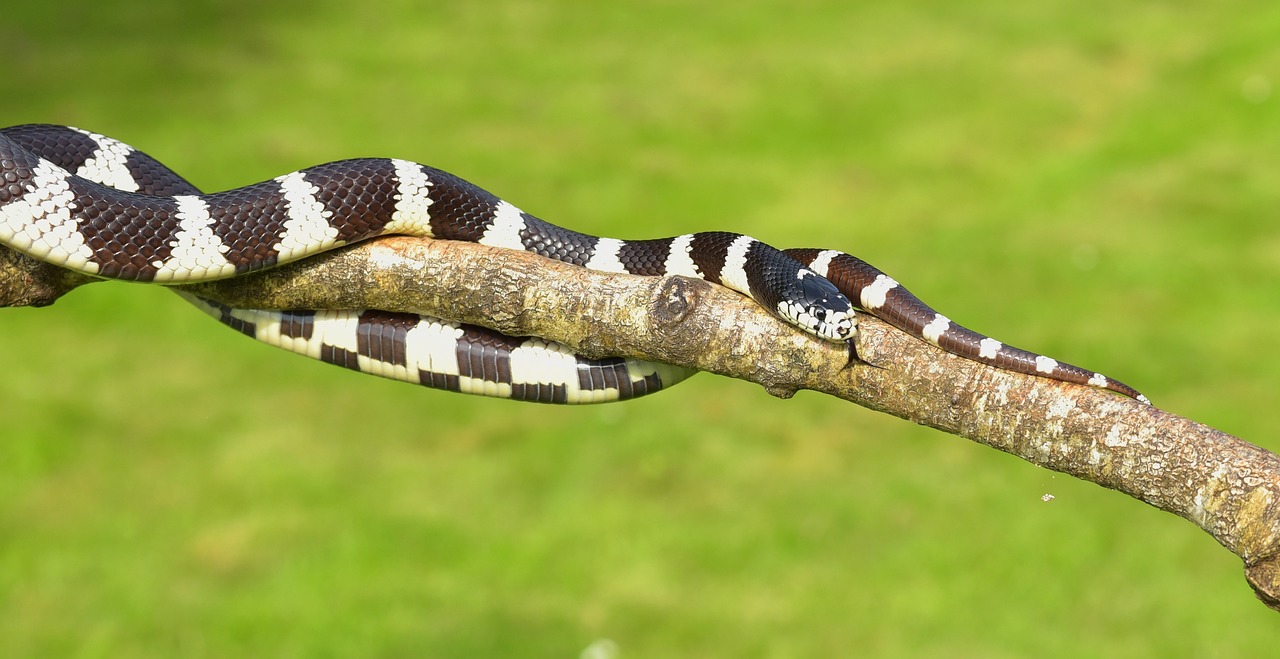
An adult kingsnake with dark and light bands. Source: Pixabay
There are many types of king snakes, but the California kingsnake and California mountain kingsnake are both native to the San Diego area.
Characteristics
The California kingsnake varies in appearance, but most have alternating dark and light bands across their body. Bands may be black, white, brown, or cream.
Diet
California kingsnakes may eat rodents, reptiles, birds, and small amphibians. They’re also known for eating other snakes, including rattlesnakes; kingsnakes are resistant to rattlesnake venom and can survive rattlesnake bites.
Habitat
You can find king snakes in woodland chaparral, grassy areas, deserts, and sometimes even suburban areas.
Gopher Snakes (harmless to humans)

The San Diego and Pacific gopher snakes roam southern California and other areas seeking small prey.
Characteristics
Gopher snakes can be differentiated from rattlesnakes by their head shape (which is narrow and rounded, not triangular) and lack of rattle. Their base color ranges from yellow to dark brown and is usually adorned by dark brown spots.
Diet
These snakes are constrictors. Small mammals, birds, and lizards comprise a gopher snake’s diet.
Habitat
Grassland and open woodlands tend to be a gopher snake’s favorite spots. The snake generally favors open, drier areas, including fields and farmland.
Garter Snakes (harmless to humans)
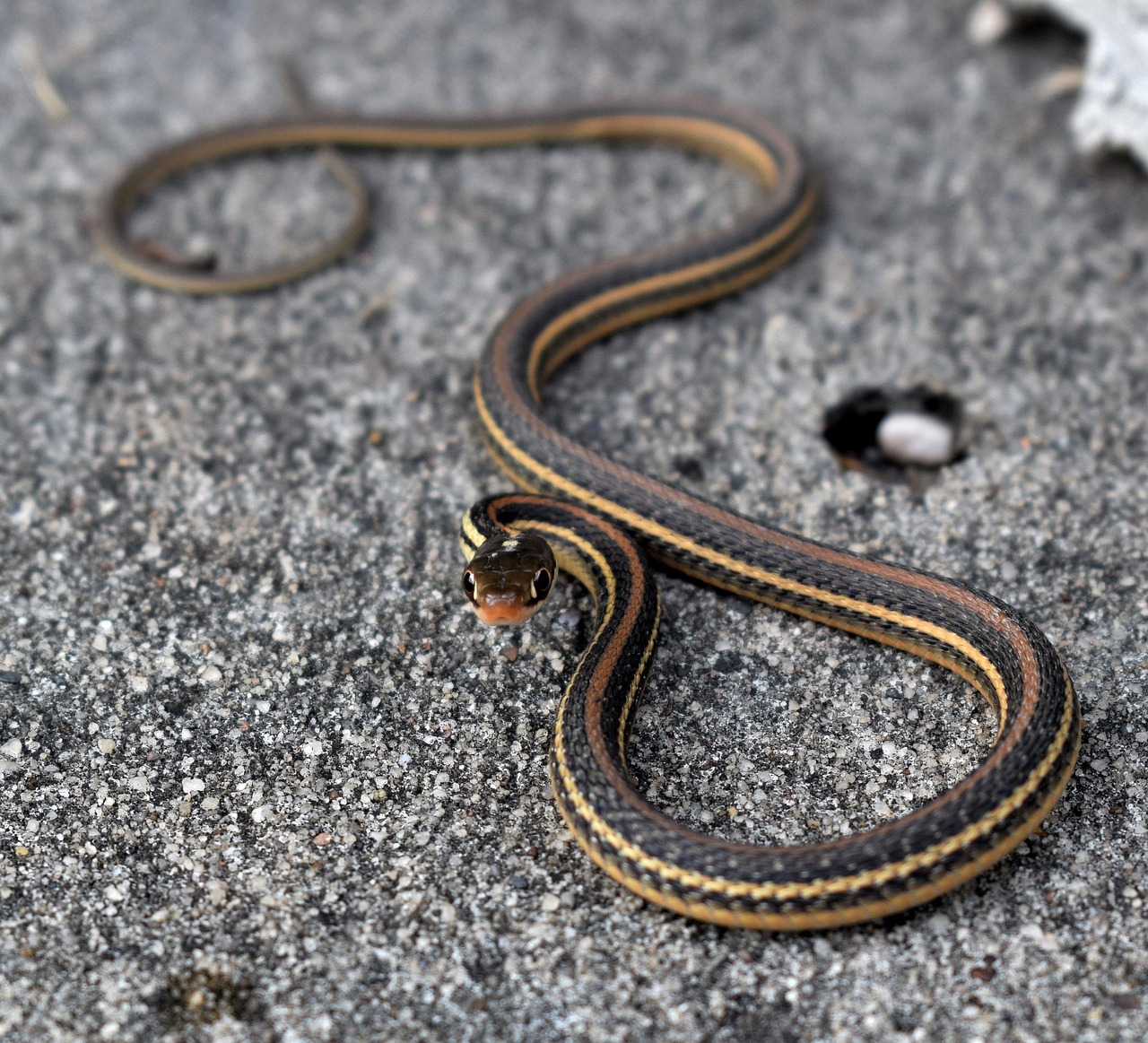
A small adult garter snake. Source: Pixabay
This common snake is a popular option for pets and is unlikely to harm humans. It’s among the most frequently spotted snakes in California and surrounding areas.
Characteristics
Most California garter snakes are medium in size, with slender bodies and small heads. Their scales are keeled and take on a striped pattern, often featuring red coloring on the snake’s sides.
Diet
Like many other species, garter snakes prefer to eat small mammals, insects, and amphibians like frogs.
Habitat
Garter snakes are adaptable and may be spotted in many habitats, including forests, grassy areas, marshes, near bodies of water, and deserts.
Striped Racer Snake (harmless to humans)
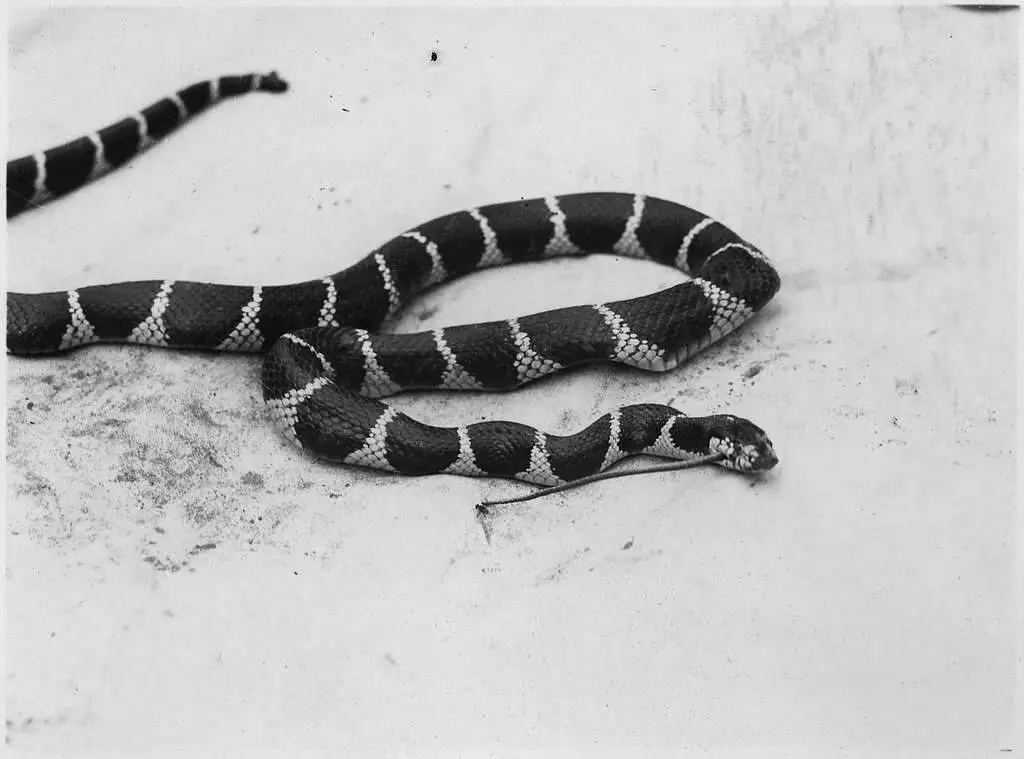
Also known as whipsnakes, striped racers can closely resemble other snake species. Many times, what sets them apart is their behavior.
Characteristics
Striped racer snakes are slender, long, and quick. They slither quickly across the ground or under surface objects, which makes them “racers.” These snakes are dark brown or black with yellow stripes along their bodies.
Diet
The California whipsnake eats live animals like insects, birds, small mammals, and lizards. They may also eat other snakes.
Habitat
Striped racer snakes thrive in chaparral, open woodlands, and rocky hillsides.
Patch-Nosed Snake (harmless to humans)
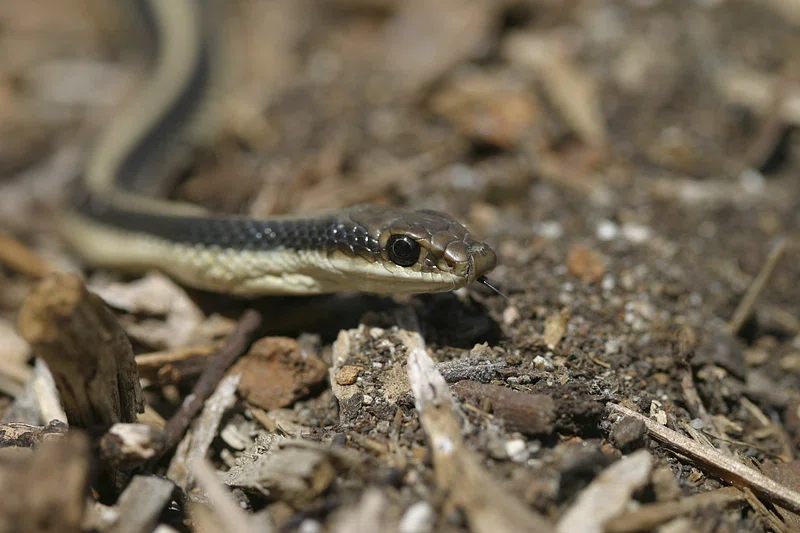
The patch-nosed snake is common throughout the West Coast and can be found in California, Arizona, New Mexico, and Texas.
Characteristics
These snakes have slender bodies ranging 18 to 44 inches long with a light brown or gray coloring and dark brown splotches or stripes.
What makes patch-nosed snakes unique is an elongated, pointed rostral scale on their noses. This scale resembles a “patch” and gives the snake its “patch-nosed” nickname.
Diet
Patch-nosed snakes mostly eat small mammals and reptiles but also enjoy birds and bird eggs. They may feast on insects or dig up reptile eggs.
Habitat
These snakes prefer arid regions like deserts and grasslands. They seek areas with soft and sandy soil that they can burrow into.
San Diego Night Snake (harmless to humans)
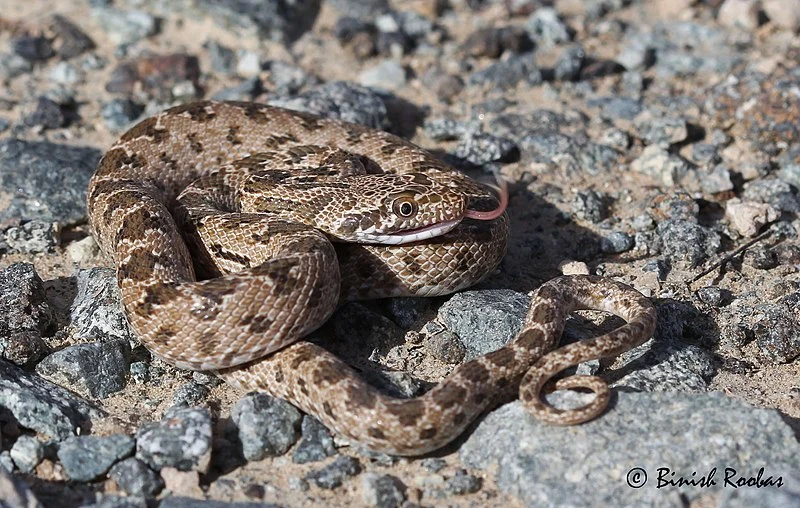
Source: Broobas
The San Diego Night Snake is elusive, likely due to its nocturnal habits. You may also spot another type of night snake, the ring-necked snake, around the same time.
Characteristics
Night snakes are fairly small and usually only 12 to 26 inches long. They have light gray or brown bodies coated with darker bands or splotches.
These snakes have vertical pupils that resemble those of a cat, which sets them apart from other species. They also have a set of dark spots on the neck that makes them easy to identify.
Diet
The San Diego night snake eats small reptiles like lizards and small snakes. They might also feed on small amphibians and invertebrates.
Habitat
These snakes can be found in California’s woodlands, deserts, and grasslands. They’re often spotted under rocks or logs.
 1st pest control service just $49
1st pest control service just $49
Must schedule service online.
Act now. Limited time offer.
Dealing with Snakes
If you encounter a snake in or around your home, your first reaction may be to panic. But most snakes pose little threat to humans and can be managed safely with the right approach.
What Should You Do?
When you see a snake, stay calm. Remember that the snake is likely far more afraid of you than you are of it. Here’s what you can do to navigate the situation.
Do:
- Stay Away: Try to stay at least six feet away from the snake whenever possible.
- Breathe: Keep calm and avoid making sudden movements that might startle the snake.
- Let it Leave: So long as a snake is non-venomous, it’s likely best to back away and wait for it to move on its own. You can use a broom to gently herd a snake away or out of your home if necessary.
Don’t:
- Handle It: Never pick up or touch the snake, even if you think it is non-venomous.
- Kill the Snake: Doing this is unnecessary and potentially harmful. Many snakes are harmless and help control local pest populations.
- Ignore Venomous Snakes: If you spot a rattlesnake or another venomous snake, keep all people and animals away to avoid bites. Contact a pest control professional as soon as possible to remove the snake.
Snake Deterrent Programs
Snake deterrent programs help eliminate the factors that tend to attract snakes. Simple Pest Management’s snake deterrent program focuses on determining why snakes gravitate to an area, whether indoors or outdoors. Then, Simple Pest Management applies snake repellent in appropriate areas to keep snakes away.
When you spot a snake, contact us immediately to learn how to proceed best. Let our professionals take care of the hard work for you and your family so that you can stay safe.


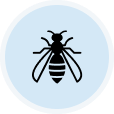

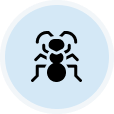
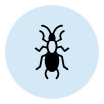

 You’re supporting a small, local business
You’re supporting a small, local business


